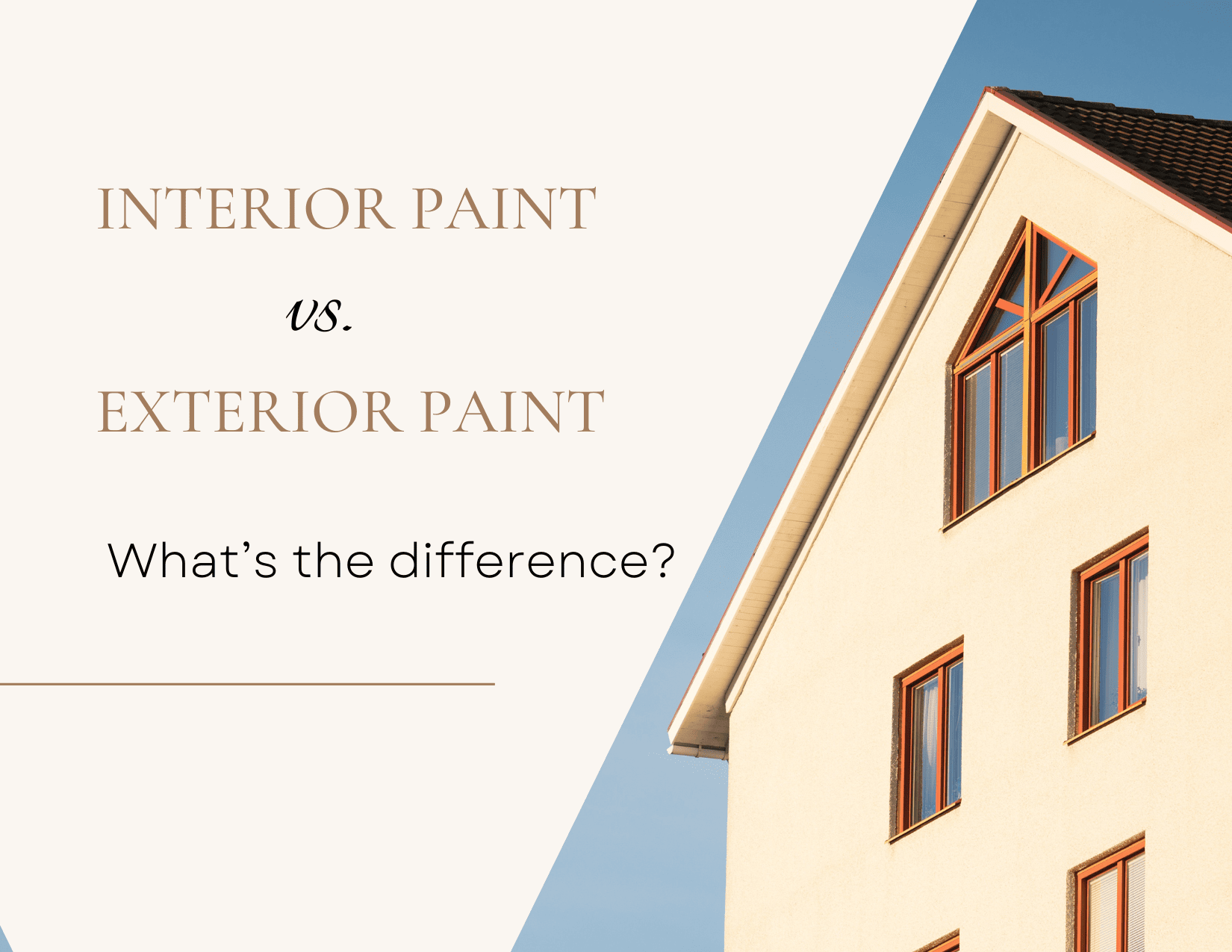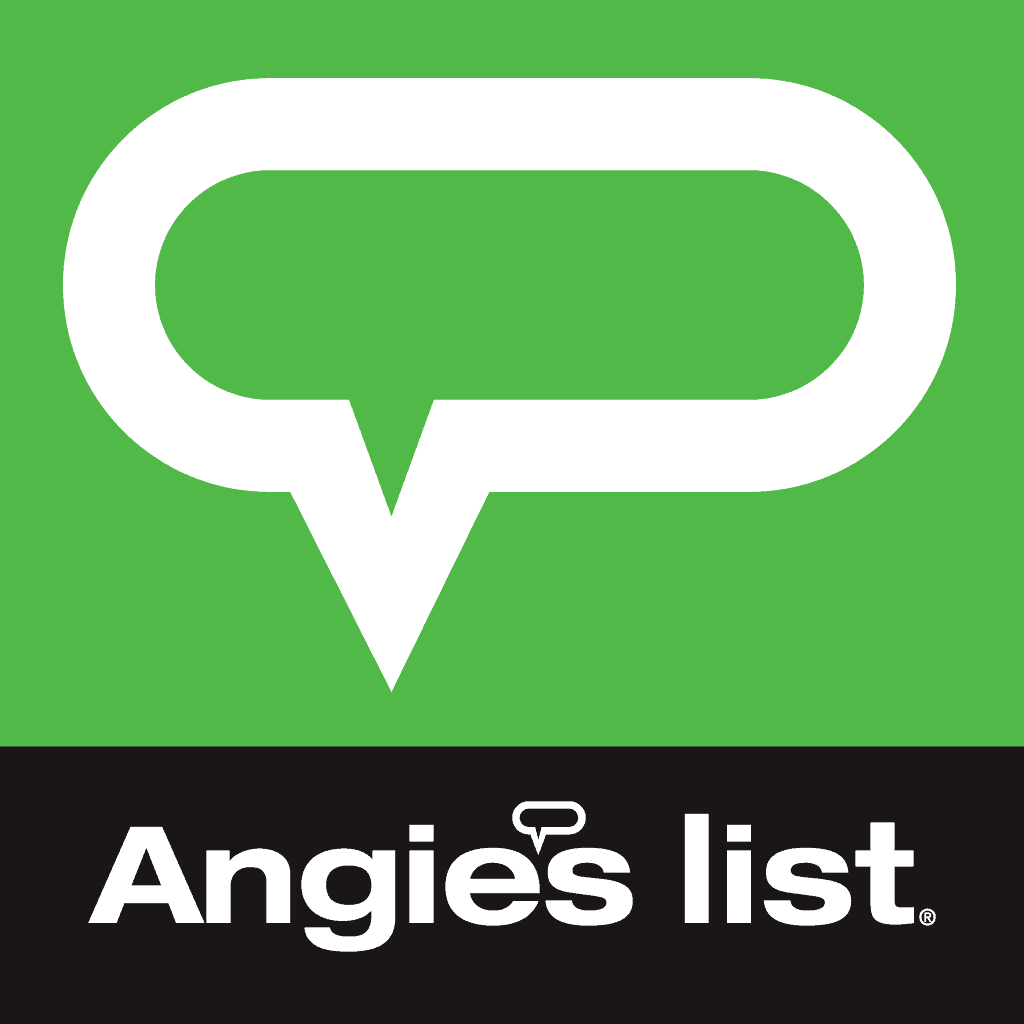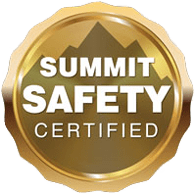
08 Jan Is there a Difference Between Interior and Exterior Paint?
Is there a Difference Between Interior and Exterior Paint?
Do you have some leftover interior paint and need to do some touch-up exterior painting? Before you grab that brush, you should know that exterior and interior paints are different. They are formulated differently, which means they’re not interchangeable. You can’t just substitute interior paint for exterior. Let’s take a closer look at those differences.
The Basic Ingredients of Paint
Paint is made up of four elements:
-
-
-
- Resin: It binds the pigments together and helps the paint dry.
- Pigments: They give paint its color.
- Additives: These can act as fillers and sometimes as anti-fungicidal agents.
- Solvents or water-based: These make the paint easier to apply, whether chemical-based (alcohol or acetone) or water-based.
-
-
The Differences Between Interior and Exterior Paint
The differences between the two paints come down to the ingredients used, particularly exterior paint.
Exterior paints must withstand weather, mildew/mold, and UV rays in ways that interior paints do not.
-
-
-
- Additives in exterior paint help it resist fading from UV rays, adhere to certain surfaces, and discourage mildew.
- Exterior paint is made with resins that allow it to withstand temperature fluctuation.
- Those combined additives and resins emit more VOCs (volatile organic compounds) than those found in interior paints.
- Exterior paint offers fewer finish options: flat, semi-gloss, or gloss enamel.
-
-
Interior paints have different qualities than exterior paints and differ from them in the following ways:
-
-
-
- The resins found in interior paint allow it to better withstand scratches or scuffs and make cleaning easier.
- Interior paints are less likely to contain fungicides.
- Interior paint emits lower VOCs than exterior paints.
- Unlike exterior paints, interior paints come in a wider variety of finishes, including matte, satin, eggshell, semi-gloss, and gloss.
-
-
Selecting the Right Type of Paint
The outlined differences mean you shouldn’t swap one type of paint for the other. Each paint type – exterior and interior – has formulations that are indicated for its use.
Interior paint is not formulated to withstand exterior conditions. Using it outdoors will mean needing to repaint more often. Its shorter lifespan can also expose the surface to weather conditions that increase the likelihood of surface deterioration.
Using exterior paint with high VOC emissions inside your home is not advisable and can pose certain health risks.
If you need to do exterior touch-ups, we suggest using paint formulated for exteriors. The same goes for indoors. Use only interior paints for touch-ups inside your home.
FAQ
1. What is the primary difference between interior and exterior paint?
Interior paint is formulated for use inside buildings, focusing on aesthetics, ease of application, and resistance to scuffs or stains. It often has a smoother finish and lower levels of volatile organic compounds (VOCs) for better indoor air quality. Exterior paint, on the other hand, is designed to withstand harsh outdoor conditions like rain, UV rays, and temperature fluctuations, making it more durable and weather-resistant with higher VOC content for added protection.
2. Can I use interior paint for exterior surfaces or vice versa?
It’s not recommended to use interior paint on exterior surfaces because it lacks the durability to handle weather exposure, leading to peeling or fading. Similarly, using exterior paint indoors can be problematic due to its higher VOC content, which may release stronger odors and be less safe for indoor environments. Always choose the paint type suited for the specific application.
3. How do the finishes of interior and exterior paint differ?
Interior paints often come in finishes like matte, eggshell, or satin, which prioritize appearance and ease of cleaning in low-exposure areas. Exterior paints typically have finishes like semi-gloss or gloss to provide better resistance against moisture and dirt, as well as easier cleaning of outdoor surfaces. The choice of finish impacts both durability and visual appeal depending on the location.
4. Why is exterior paint more expensive than interior paint?
Exterior paint tends to be pricier due to its specialized formulation, which includes additives for weather resistance, UV protection, and mildew prevention. These components increase production costs. Interior paint, while still high-quality, focuses more on color retention and washability, often requiring fewer protective additives, which can make it less expensive.
5. How do I choose between interior and exterior paint for a project?
Consider the location of the surface you’re painting. For indoor spaces like living rooms or bedrooms, opt for interior paint with the desired finish and low VOCs for safety. For outdoor areas such as fences, decks, or house siding, select exterior paint to ensure longevity against environmental factors. Checking the paint label for its intended use and consulting with a professional can also guide your decision.

Mike Katounas is the owner of Home Works Painting, a painting business in Northern Virginia. He has over 15 years of experience in residential interior and exterior painting, drywall installation/repair, carpentry, wallpaper removal, power washing, commercial painting, color consultation, and staining/sealing. Their service areas include Chantilly, Fairfax, Herndon, Oakton, Reston. Mike takes pride in his work, and he always follows a strict code of conduct that includes the use of quality paint, a clean workspace, and an honest, respectful approach to his customers.












Sorry, the comment form is closed at this time.